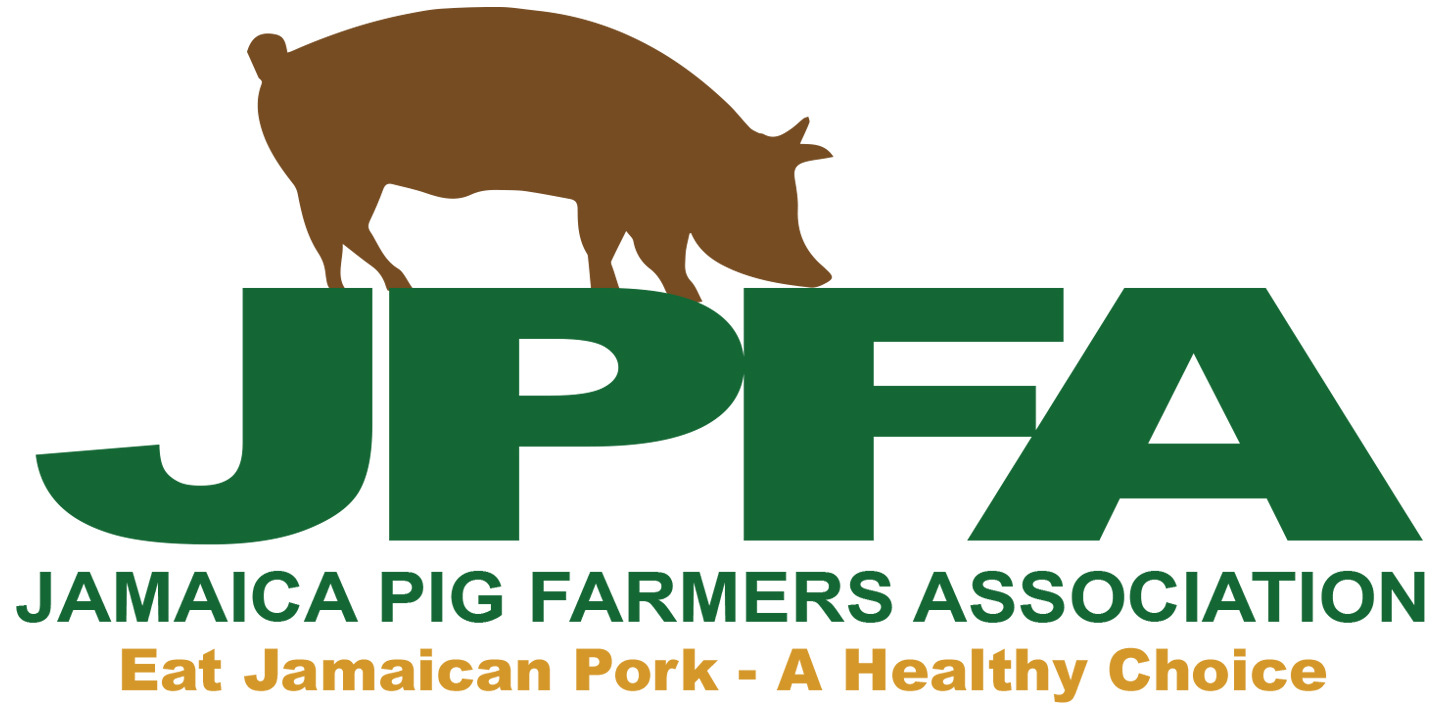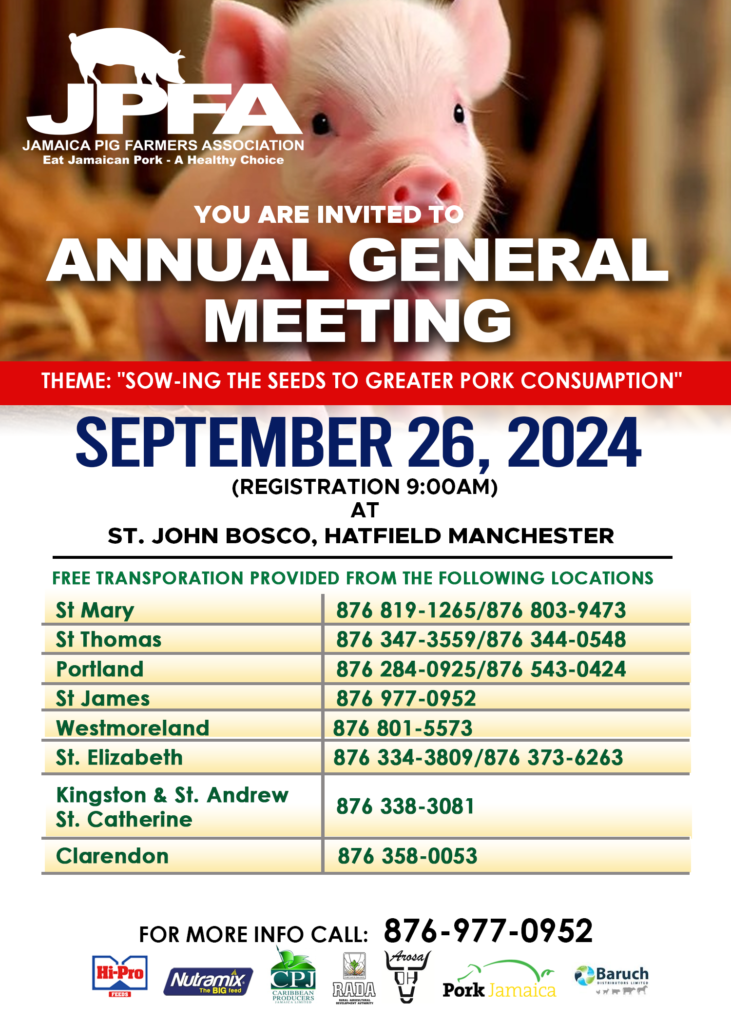MANDEVILLE, Manchester — Not too long ago a persistent glut in pork production triggered uncompetitively low prices and general depression in the pig industry.
Today, from the perspective of pig farmers the situation is much improved. However, the challenge, they say, is to bring the industry to some level of “equilibrium”, thereby minimising, if not completely bringing to an end the damaging cycles of boom and bust.
Industry leaders are advocating the setting up of a pork council backed by appropriate legislation; and representative of all “stakeholders” which would monitor, if not regulate the industry.
“Every stakeholder within the industry would have a place at such a table (pork council) so that we can monitor the industry at large,” explained recently elected president of the Jamaica Pig Farmers Association, Hanif Brown.
Immediate past president Delroy Manya envisages a stakeholders’ council that would include representatives from farmers, pork processors, feed companies, technical expertise from the agriculture ministry and the Scientific Research Council, et al.
The aim, said Manya, must be to develop a unified approach from all industry players and stakeholders “so we can control production”.
As the situation now stands, the average farm gate price of live weight pigs ranges from $110 to $115 per pound, according to Brown. Pig carcasses at the farm gate, currently goes for an average $175 – 185 per pound, he said.
That’s a significant improvement on a year ago at the tail-end of the last glut, when the farm gate price for live weight averaged $90 per pound and for carcass, an average $150 per pound.
Industry players say the danger now in the absence of controls is the likely influx of occasional producers seeking to cash in, which will lead to “over-production”, rapid price drop and in effect another glut cycle.
At the recent annual general meeting of the Pig Farmers Association, several speakers from various branches of the livestock sector addressed the need for unified action towards stable production.
“This pig industry has been on a roller-coaster ride for over 40 years. Surplus, shortage, surplus, shortage and we cannot continue like that,” said Valdence Gifford, managing director of Sweet River Abattoir. “No investment is sustainable along that line. … I think there has to be some semblance of a production equilibrium where demand and supply play together at the same level,” he added.
The theme was underlined by Christopher Levy of major animal feed company, Hi-Pro Feeds. “All the stakeholders benefit when things are good, all stakeholders suffer when things are bad,” he said.
As part of the “alignment” process between production and the available market, Brown said that his administration will be pushing to give farmers greater “access to processors on a contract basis”.
Since the formal launch of the Pig Farmers Association 12 years ago, pork production in Jamaica has improved to the point where the country is self-sufficient in prime cuts. Nowadays only pork fringes such as bellies for bacon, tails, and trimmings for the sausage sector are imported.
At the recent AGM, chief technical director in the Ministry of Agriculture Derron Spence, who was representing new agriculture minister Derrick Kellier, placed pork production in Jamaica at 10 million kilogrammes annually. A study conducted two years ago by local firm Trevor Hamilton and Associates valued the industry at $6.4 billion.
As was a repeated theme of Roger Clarke, the late agriculture minister, Kellier, as reported by Spence, made the obvious point at the AGM in Mandeville that exports could help ease the pressure of increased production.
But while processors are quietly reporting success in accessing markets in CARICOM and beyond, a challenge is meeting the increasingly stringent standards being set for food and meat globally.
The establishment of “traceability” procedures from the “farm to fork” is integral to that process. The message was repeatedly delivered at the AGM that farmers will have to “modernise” and “retrofit” to meet the demanding requirements ahead of long-awaited traceability legislation.
“We need to have a structure in agriculture, where we have produce moving from farmer to end user so there is traceability,” stated opposition spokesman on agriculture, JC Hutchinson.
Standards apart, creativity and a willingness to market new pork-derived products was recommended by guest speaker Dr Robert Thomas as one way to soak up mass production.
The Scientific Research Council (SRC) had much to offer in that regard, said Thomas, who is a consultant attached to the United States Soybean Export Council.
“Can we commission the SRC to work at producing new products that you can sell?” he asked rhetorically.
Innovative thinking could twin processed pork with other local products such as sweet potato and cassava chips, Thomas argued.
“How about jerk pork and bammy — snack food that you snap open like cheese crunches, how about … pork granola, pork and cashew nuts, pork and almonds, pork snacks like you have cheese curls… stuff that you can market for the airlines,” he said.
Source: http://www.jamaicaobserver.com/business/Towards-a-stable-pork-industry_17735519

